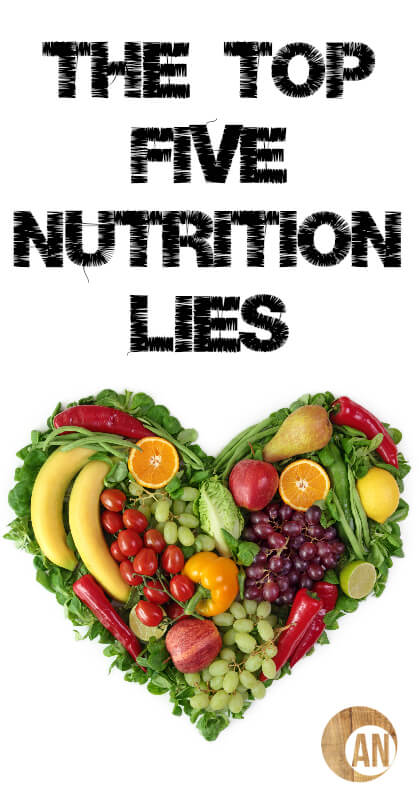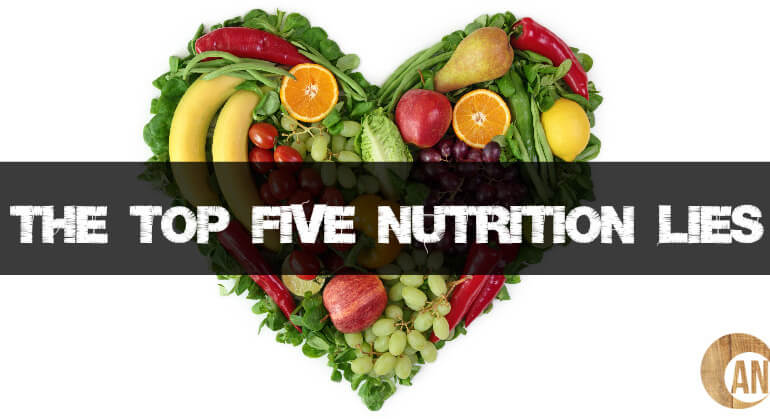Much of this information is pulled directly from my upcoming ebook on how to eat like your ancestors for glowing skin, beautiful hair and radiant health. We cover so many nutrition lies in that one.
Make sure you’re signed up for my newsletter for the details!
Number One:
Fat is bad, fat will make you fat, fat will give you heart disease.
I have a serious love for fat, butter on my broccoli, grass-fed gouda with prosciutto, coconut cream with raspberries; the list is endless. But somewhere along the way, we were scammed.
We were told that fat is public enemy number one, and we believed it. So how were we duped?
Ancel Keys was an American scientist who conducted the Seven Countries Study in 1958. The study examined the correlation between cardiovascular disease and the dietary intake of fat.
He concluded that the countries with the highest fat intake also had the highest instances of cardiovascular disease; therefore fat consumption causes cardiovascular disease. There are two main issues with this:
- Correlation does not equal causation.
- He omitted 15 other countries whose data did not support his hypothesis.
Here is the graph he used to support his theory:
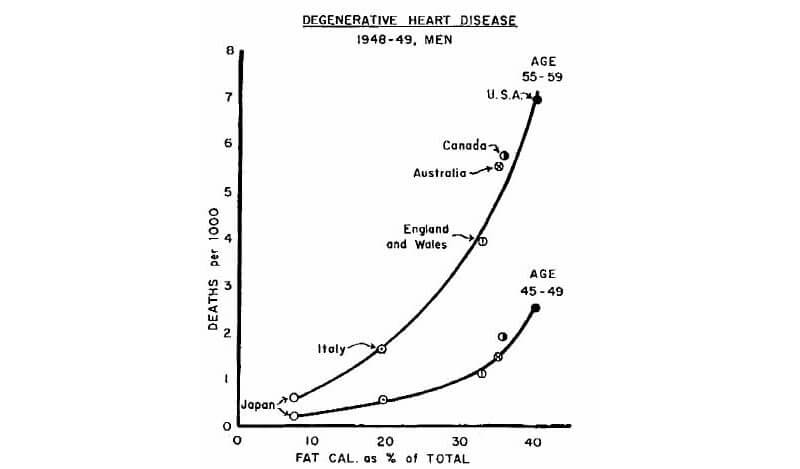
And here is the actual graph:
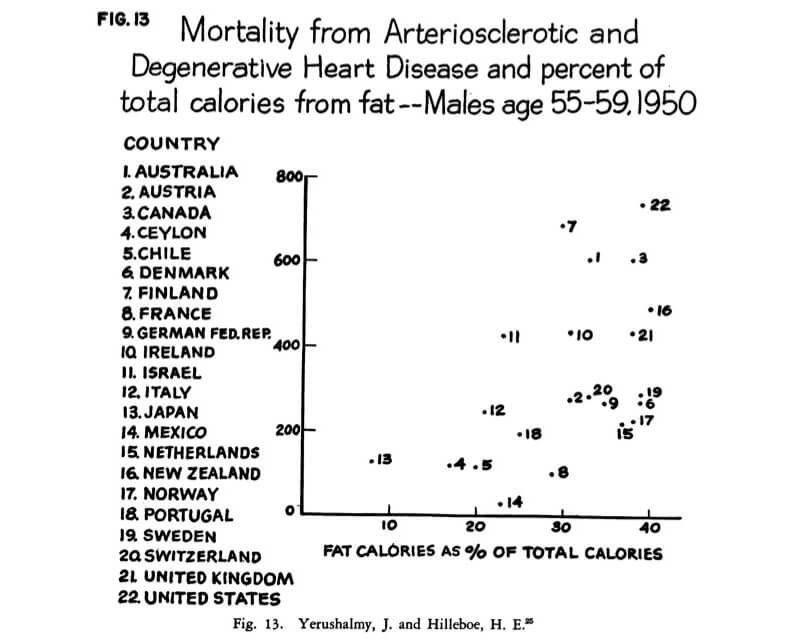
Keys purposely omitted countries that have a high consumption of fat but a low instance of heart disease – like Norway and Holland; and left out countries where fat consumption was low but the rate of heart disease was high. And yet, we still rely on this man’s information to this day.
The truth is, there is no correlation between saturated fat and heart disease. Some of the healthiest cultures eat the highest amount of saturated fat and have low rates of heart disease – the Eskimo, the French, the Masai Tribe and many others.
Number Two:
Grains are good, grains should make up the majority of your diet.
I don’t mean to come off as a played out grain-hater. I even eat small amounts of white rice (find out why white rice is healthier than brown rice HERE). And I think if you’re going to eat grains, that eating sprouted grains once in a while isn’t the end of the world.
But we have been told time and again that grains are healthy, that grains should be the basis of any healthy diet. Here is partially why this isn’t true.
Grains, unlike most vegetables and meats, are actually equipped with defense mechanisms. Take the berry, for example, it “wants” to be eaten. An animal eats a berry, the seeds are pooped out, those seeds grow. Grains to do not want to be eaten. They are equipped with lectins, phytates, and gluten – all of which are toxic.
Let’s start with lectins.
Lectins are a group of carb-binding proteins naturally found and particularly concentrated in all grains and legumes. In addition, lectins are highly inflammatory, sticky and bind to the lining of the intestine. This leads to intestinal damage, reduced ability to absorb vitamins and minerals, negatively affects the gut flora and eventually leads to leaky gut.
“Locally, they can affect the turnover and loss of gut epithelial cells, damage the luminal membranes of the epithelium, interfere with nutrient digestion and absorption, stimulate shifts in the bacterial flora and modulate the immune state of the digestive tract. Systemically, they can disrupt lipid, carbohydrate and protein metabolism, promote enlargement and/or atrophy of key internal organs and tissues and alter the hormonal and immunological status.” Source
Leaky gut is what that sounds like.
The gut wall has been damaged, allowing undigested food particles and toxins to enter the bloodstream, along with yeast, fungi, pathogens, etc. If you experience any of the following symptoms, you may have leaky gut:
- acne
- fatigue
- yeast infections
- bacterial vaginosis
- bad breath
- irritability
- mood swings
- intense, heavy menstrual cycles
- brittle hair and nails
- eczema
- food sensitivities/allergies
- an autoimmune disease
- gas, bloating, diarrhea, constipation
- brain fog/memory loss
Phytates are anti-nutrients found in grains and legumes. Phytates, or phytic acid, binds to minerals like zinc, copper, iron, magnesium, niacin, and calcium, preventing them from being absorbed.
Phytic acid also inhibits pepsin, the enzyme needed to properly break down protein as well as amylase, the enzyme needed to break down sugar. So not only does phytic acid prevent nutrient absorption, it interferes with proper digestion.
A diet high in phytates will eventually result in nutrient deficiencies and can lead to osteoporosis and rickets. This is less common in adults, but is a very real risk, especially for children. Eating phytates regularly and over a period of time, even if you’re an adult can lead to serious health risks.
Number Three:
GMOs are safe, GMOs produce more yields, GMOs will save the world.
No, no and no. GMOs have not proven to be safe or effective. GMOs are genetically modified organisms that have been genetically manipulated to withstand the spraying of RoundUp. The main ingredient in RoundUp is glyphosate. The Institute For Responsible Technology reports that glyphosate:
- binds with nutrients, depriving plants of vital minerals
- interferes with photosynthesis and reduces water efficiency (not so environmentally friendly)
- has been linked to infertility
- actually increases the need for herbicide use
- promotes more than 40 plant diseases
- is not biodegradable (which means it ends up in our streams, rivers, and oceans)
Genetically modified food has been linked to infertility, cancer, aggression, allergies and even tumor growth.
A French Study was conducted involving 200 rats and spanned two years; most studies on GMOs span 90 days. The study involved feeding the rats Roundup Ready corn.
“50 percent-80 percent of the females had developed large tumors compared to 30 percent in the control group.” As for males, “Liver congestions and necrosis were 2.5 to 5.5 times higher than in the control group … [and] there were also 1. –2.3 times more instances of ‘marked and severe’ kidney disease.” Overall, among the rats receiving GMO and/or Roundup, “Up to 50 percent of males and 70 percent of females died prematurely, before deaths could be put down to normal ageing, compared with only 30 percent and 20 percent in the control group.” Source
The rats also developed severe tumors.
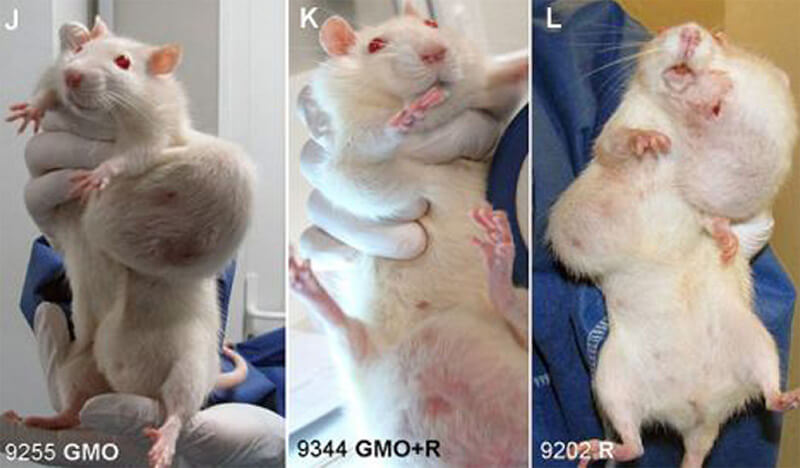
But GMOs will help feed a growing population, right? Wrong.
Even the US Department of Agriculture has said”
GE crops available for commercial use do not increase the yield potential of a variety. In fact, yield may even decrease…Perhaps the biggest issue raised by these results is how to explain the rapid adoption of GE crops when farm financial impact appears to be mixed or even negative. Source
GM seeds do not produce higher yields and are not more environmentally friendly. GM seeds have to be repurchased every season and require more water and fertilizer (both of which are often scarce in third world countries).
Number Four:
Meat, especially red meat, will give you cancer, will rot in your colon, will give you heart disease.
Ugh. Poor red meat. How did a health food whose production helped build topsoil and fertilize the earth become vilified and grown with concentrated animal feeding?
The truth is that humans evolved because of our meat consumption – it allowed us to grow bigger brains and a smaller gastrointestinal tract. In addition, our ancestors ate meat and they did so without heart disease, without cancer, without obesity. Meat does not rot in the colon, it is easily digested. It’s also rich in vitamins and minerals.
Red meat (and I’m talking grass-fed red meat) contains beneficial omega-3s, conjugated linoleic acid (CLA) which helps prevent and shrink tumors, vitamins A, E, D, and K, as well as B12 and iron – two things extremely difficult to obtain from a plant-based diet.
Number Five:
Plant-based diets are ideal.
I remember the day my doctor encouraged my vegan diet as a teen – a diet that robbed me of my health. No one told me I needed to eat animals for B12, true vitamin A, for omega-3s, or that I actually needed the fat we so carelessly vilify.
There are no plants based forms of vitamin B12. B12 is produced in the gut of animals and it is literally impossible to obtain from plants (they do not store it). And really, is this an ideal diet if you can’t obtain necessary vitamins and minerals from your food? I mean, that’s literally the whole point of eating.
I was told I could get omega-3s from flax and chia seeds. Flax and chia seeds are rich in ALA (alpha-linoleic acid), not EPA (eicosapentaenoic acid) or DHA (docosahexaenoic acid), and flax does not convert to EPA and DHA in humans. There are no viable plant-based forms of EPA and DHA, which are necessary for proper brain growth in children.
What do you think of when you hear vitamin A? Carrots? Squash? Other orange colored veggies? The truth is that these contain beta-carotene, not retinol. Retinol is the active form of vitamin A that the body needs. While a small portion of beta-carotene can be converted into retinol, most people are unable to effectively make this conversion.
I wish I had known that these lies were not based on science, history or fact when I was younger.
It would have saved me a lot of trouble. It would save people from obesity, from diseases. Help spread the word about these nutrition lies. And comment below sharing the most ridiculous nutrition lies you’ve been told!
